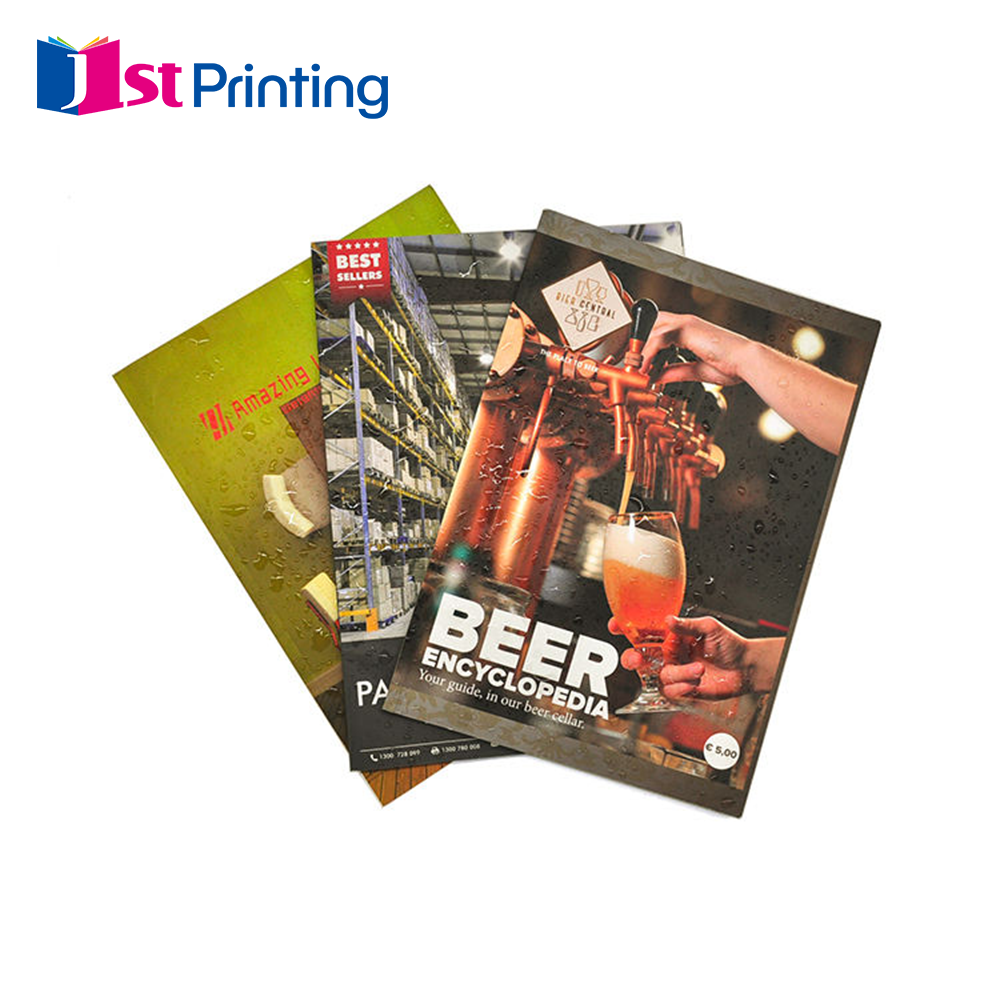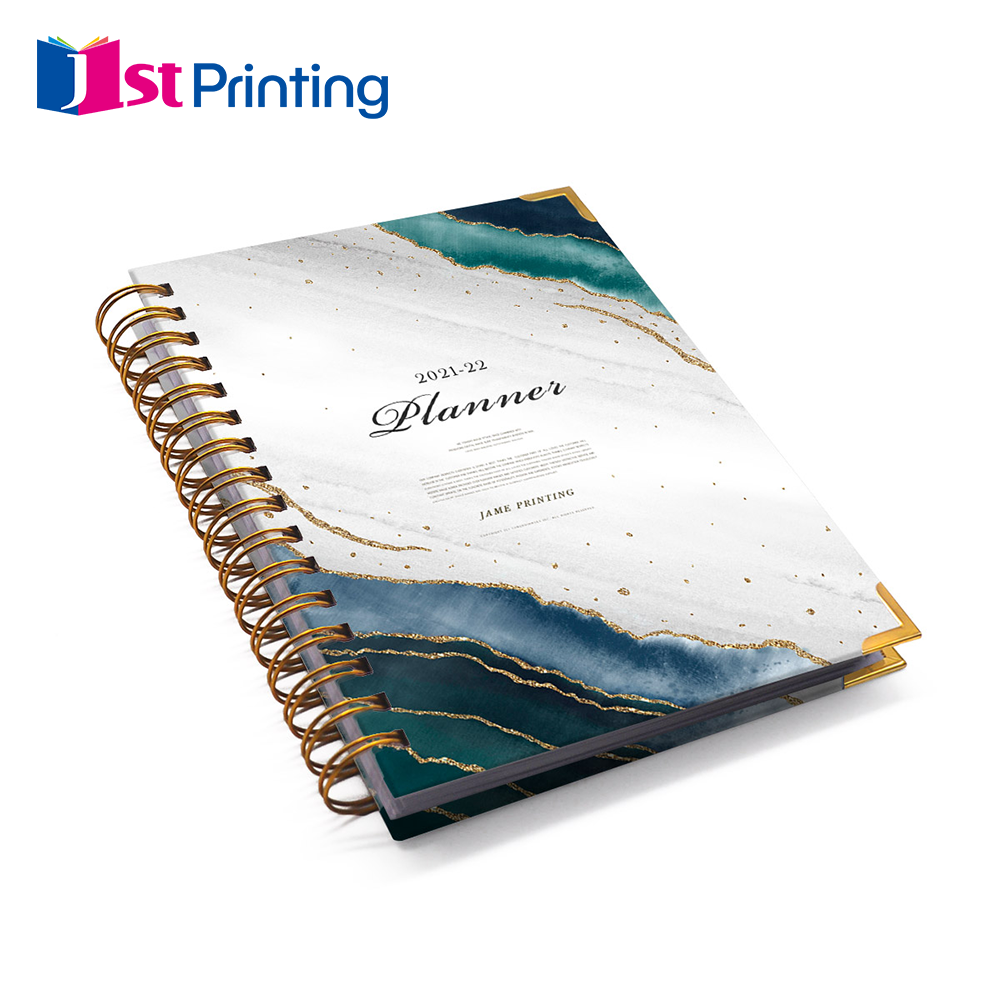Por qué los materiales de marca impresos siguen siendo importantes
La importancia de los materiales impresos para el reconocimiento de la marca
Los folletos, trípticos y otros materiales impresos funcionan mejor de lo que la mayoría piensa a la hora de recordar marcas. Los anuncios digitales suelen ignorarse o olvidarse muy rápido en la actualidad. Pero cuando alguien recoge un folleto o ve un póster realmente llamativo en algún lugar, hay algo en tenerlo físicamente en las manos que se queda en la memoria. La naturaleza física de la impresión involucra más de un sentido a la vez, fortaleciendo esos recuerdos de marca. Para las empresas que intentan destacar en el entorno online, donde todo se pierde entre el ruido, contar con algo tangible como un folleto bien diseñado puede marcar toda la diferencia. La gente recuerda mejor las cosas que toca y ve en la vida real que cualquier cosa que aparezca momentáneamente en una pantalla.
La mercancía con marca impresa viene en muchas formas, desde pequeñas tarjetas de presentación hasta pósteres masivos que llaman la atención en las paredes. Estos elementos hacen mucho más que promocionar productos o servicios. De hecho, ellos mismos indican a las personas qué tipo de empresa es con la que están tratando. Tomemos como ejemplo las tarjetas de presentación. Una bien hecha dice casi de inmediato "nos tomamos en serio". Folletos con diseños atractivos, por ejemplo, gritan creatividad e innovación. Diferentes formatos significan que las empresas pueden elegir exactamente cómo desean presentarse visualmente. Lo más importante, sin embargo, es mantener todo con una apariencia coherente sin importar dónde los clientes lo vean por primera vez.
Los materiales impresos desempeñan un papel importante en la forma en que las personas perciben una marca, ya que crean consistencia tanto en lo que se dice como en su apariencia visual, lo cual moldea la opinión de los clientes con el tiempo. Cuando las empresas se mantienen fieles a la misma paleta de colores, los logotipos aparecen en todas partes, desde tarjetas de presentación hasta folletos, y los mensajes clave permanecen invariables en todos los materiales impresos, la marca permanece en primer plano para los consumidores. La coherencia en la marca no se trata solo de verse bien; en realidad ayuda a construir una confianza real entre la empresa y su público. Las pequeñas empresas notan especialmente este efecto cuando comienzan a utilizar materiales de marketing profesionalmente diseñados en lugar de plantillas genéricas. La diferencia es abismal en términos de proyectar una imagen organizada versus desordenada, lo cual es muy importante cuando se intenta establecer relaciones duraderas con los clientes.
Cómo los materiales impresos construyen confianza y credibilidad
Lo impreso todavía importa mucho a la hora de conectar marcas con personas reales. Hay algo en tener algo físico en las manos que genera confianza de formas en que las pantallas simplemente no pueden competir. Claro, los sitios web y las aplicaciones son rápidos y fáciles de acceder, pero no pueden reemplazar el tacto real de un folleto, catálogo o incluso una tarjeta de presentación. Las personas suelen recordar mejor las cosas cuando pueden tenerlas físicamente. Estudios muestran que la gente establece conexiones más fuertes con marcas después de interactuar con materiales impresos, ya que nuestros cerebros procesan las experiencias táctiles de manera diferente a las digitales. Por eso, muchas empresas siguen invirtiendo en impresión de calidad, a pesar de todas las opciones digitales disponibles hoy en día.
Material impreso de buena calidad aumenta realmente la credibilidad de una marca y hace que las personas la recuerden por más tiempo. Cuando las empresas invierten en papel de calidad y diseños con aspecto profesional, los clientes lo notan y empiezan a asociar esa calidad con los valores de la marca. Piensa en esos folletos brillantes con imágenes claras o en tarjetas de presentación que se sienten firmes al tacto: estos elementos le dicen al cliente que la empresa presta atención a los detalles. La gente tiende a creer que si una marca gasta dinero en una impresión de calidad, probablemente también dedica un esfuerzo similar a sus productos reales. Esta presencia física ayuda a construir confianza con el tiempo, haciendo que la marca destaque frente a competidores que quizás ahorren en sus materiales de marketing.
En conclusión, integrar materiales de marca impresos bien diseñados en su estrategia de marketing puede aumentar significativamente la confianza y la credibilidad, diferenciando su marca en un mundo digital concurrido. Al invertir en materiales tangibles y de alta calidad, las marcas pueden tener un impacto memorable en los consumidores, asegurando una lealtad duradera y una percepción positiva de la marca.
Tipos de materiales impresos para la marca que mejoran el reconocimiento
Los materiales impresos de marca son fundamentales para aumentar la visibilidad y el reconocimiento de la marca. Aquí, exploramos tres tipos de materiales que destacan por sus beneficios únicos en la mejora del conocimiento de la marca.
Libretito personalizado de la revista moderna
Para las marcas que desean compartir su historia con todo detalle mientras comunican eficazmente sus valores fundamentales, los folletos personalizados siguen siendo una de las mejores opciones disponibles en la actualidad. Tome por ejemplo el Folleto Personalizado Modern Magazine: muchas empresas descubren que funciona maravillas cuando necesitan conectar con los lectores a un nivel más profundo a través de contenidos ricos. La portada brillante combinada con un fuerte encuadernado perfecto hace que estos folletos sean duraderos y se vean elegantes en cualquier mesa de centro o estante. Lo que los hace particularmente valiosos, sin embargo, es la capacidad para crear impresiones duraderas. A diferencia del contenido digital que desaparece tras desplazarse hacia abajo, un folleto físico permanece allí, esperando a ser recogido nuevamente, recordando a los clientes lo que más importa de la marca mucho después del primer contacto.
Adhesivo de cartón estándar personalizado
Las etiquetas estándar personalizadas de cartón ofrecen una opción asequible para empresas que buscan convertir artículos normales en anuncios ambulantes. Las empresas pegan estas etiquetas en todo tipo de objetos, desde bolsas de compras hasta cajas de embalaje, básicamente convirtiendo cualquier cosa en un posible cartel publicitario para su marca. La verdadera magia sucede en lugares como festivales de música o tiendas concurridas, donde la gente toca y ve naturalmente estas etiquetas. Cuando alguien agarra una taza de café con un diseño ingenioso en la etiqueta, está llevando publicidad gratuita sin siquiera darse cuenta. Estas sencillas etiquetas funcionan sorprendentemente bien para mantener el nombre de la marca en la memoria del cliente, manteniendo bajos los costos de marketing.
Planificador de la espiral del guarda esquina
El planificador espiral Corner Guard sirve tanto como accesorio práctico para la oficina como dispositivo inteligente para la exposición de marca. Protege las áreas del escritorio de daños mientras ayuda a las personas a mantenerse al día con sus horarios, lo que significa que los logotipos terminan exactamente donde los trabajadores miran durante todo el día. Los profesionales que necesitan gestionar múltiples proyectos encuentran valor en este producto, al igual que los estudiantes que estudian a toda prisa para exámenes entre clase y clase. ¿Qué diferencia esto de los planificadores normales? El diseño espiral encaja realmente en las esquinas sin ocupar espacio adicional, asegurando que la imagen corporativa permanezca visible durante jornadas laborales intensas, cuando la atención es breve y las distracciones abundan.
En resumen, estos materiales impresos no sólo sirven para fines prácticos, sino que también solidifican la identidad de la marca, lo que los convierte en esenciales para cualquier estrategia de marketing destinada a aumentar el reconocimiento.
Combinar estrategias digitales con materiales de marca impresos
Cuando las empresas combinan tácticas digitales con materiales de marca tradicionales impresos, en realidad obtienen mejores resultados con las audiencias y mantienen su mensaje consistente en diferentes canales. Tomemos como ejemplo los códigos QR. Colocarlos en folletos, carteles o tarjetas de presentación permite a los clientes escanearlos de inmediato y pasar de algo físico a contenido en línea. A las empresas les encanta esto porque les ayuda a ver exactamente cómo interactúan las personas con sus materiales. ¿Qué hace que los códigos QR sean tan buenos? Convieren impresos aburridos en algo con lo que la gente puede interactuar. Solo necesitan sacar su teléfono y listo, ya están en el sitio web de la empresa, revisando ofertas especiales o siguiéndolos en redes sociales. Esta clase de interacción no solo hace que la gente esté más interesada, sino que también conduce a más ventas reales a largo plazo.
El mensaje de la marca debe mantenerse consistente tanto en entornos digitales como en formatos impresos. Cuando los anuncios digitales coinciden en estilo y contenido con las piezas de marketing físicas, las marcas refuerzan su identidad. Mantener una apariencia uniforme en los diferentes canales no solo facilita el reconocimiento inmediato de la marca por parte del público. También crea una experiencia más fluida para quienes interactúan con ella. Los beneficios que se obtienen con este enfoque incluyen una mayor exposición de la marca, una mejor construcción de reputación y una comunicación más clara de los valores que representa. Con el tiempo, estos factores contribuyen significativamente al desarrollo de clientes leales que realmente confían en lo que ven de la marca en todos sus puntos de contacto.
Mejores prácticas para diseñar materiales de marca impresos eficaces
Crear buenos materiales de marca impresos requiere pensar seriamente en los colores, las fuentes y cómo encaja todo junto en la página. Los colores adecuados realmente se quedan en la mente de la gente y les hacen asociar tu marca cada vez que ven esos tonos en otros lugares. Piensa en el rojo de Coca-Cola o en la paleta minimalista en blanco y gris de Apple. Las fuentes también son importantes, deben coincidir con la vibra que transmite tu marca, pero también deben ser fáciles de leer de un vistazo. El diseño del espacio es probablemente la parte más complicada, ya que se trata de encontrar el equilibrio justo donde las imágenes y el texto trabajan juntos en lugar de competir por la atención. Observa cómo Coca-Cola organiza su logotipo y texto de manera tan limpia uno al lado del otro, o cómo Apple logra incluir tanta información en espacios limpios sin parecer desordenado. Estas marcas reconocidas han perfeccionado estos aspectos a través de años de prueba y error, y por eso sus diseños simplemente se sienten correctos cuando los vemos.
Al evaluar la efectividad de las campañas impresas, existen varios indicadores clave que vale la pena monitorear, entre ellos el aumento de consultas recibidas, picos en el tráfico web después de ver los materiales promocionales y lo que las personas realmente opinan sobre ellos. Una buena campaña suele generar un aumento notable en las visitas al sitio web según el software de análisis web, mientras que otras personas simplemente comentan que les gustó lo que vieron en folletos o volantes. Recopilar tanto datos numéricos como opiniones ayuda a las empresas a ajustar su enfoque para lograr mejores resultados en el futuro. Hablar con los clientes mediante encuestas y verificar de dónde provienen los nuevos contactos comerciales relacionándolos con los materiales impresos proporciona un contexto real sobre si el dinero invertido en impresiones se utilizó de manera adecuada.
Conclusión: Aprovechar los materiales impresos para la marca para el éxito a largo plazo
A pesar de todas las ventajas del marketing digital en la actualidad, hay algo en tener una pieza física de material impreso que realmente conecta con las personas. La impresión tiene una presencia en el mundo real que las pantallas no pueden igualar. Hemos visto clientes que pensaban que iban a pasar completamente al entorno digital descubrir que sus clientes aún responden mejor a folletos, tarjetas de presentación o empaques que se sienten bien al tacto. Claro, la tecnología avanza a una velocidad vertiginosa, pero los buenos profesionales de marketing saben que la impresión no desaparecerá pronto. Muchas industrias aún dependen de material impreso para eventos, ferias comerciales y campañas de correo directo donde lo tangible importa más que los píxeles.
El futuro de la marca impresa en un mundo digital
A pesar de todo el material digital disponible, los materiales impresos siguen teniendo mucha importancia para la identidad de marca, ya que las personas los tocan con sus manos y los recuerdan mejor. El aspecto físico de los artículos impresos brinda a las empresas una ventaja a la hora de generar confianza en los clientes. Piénsalo de esta manera: cuando alguien recibe un folleto profesional o una tarjeta de presentación bien elaborada, tiende a tomar en serio a la empresa. Por eso, los profesionales de marketing inteligentes continúan incluyendo elementos impresos como volantes, carteles e incluso correos tradicionales dentro de su estrategia general. Estos elementos tangibles permanecen más tiempo que la mayoría del contenido en línea y ayudan a mantener la visibilidad de la marca en el mundo real.
Pensamientos finales sobre las estrategias de compromiso de la marca
Obtener los mejores resultados a partir de esfuerzos de marketing generalmente implica combinar materiales impresos tradicionales con estrategias digitales y otros enfoques. Cuando las marcas combinan distintos métodos, en realidad fortalecen la entrega de sus mensajes, ofreciendo a los clientes múltiples formas de conectarse con lo que están vendiendo. Por ejemplo, consideremos esas tarjetas de presentación con códigos QR que apuntan a sitios web, o folletos que incluyen enlaces a videos explicativos breves en línea. Estas combinaciones mantienen a las personas interesadas a lo largo del tiempo, en lugar de interacciones únicas. La mayoría de las empresas descubren que este enfoque multicanal funciona mejor para construir relaciones duraderas con su base de audiencia.


























